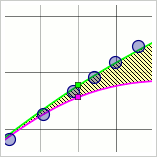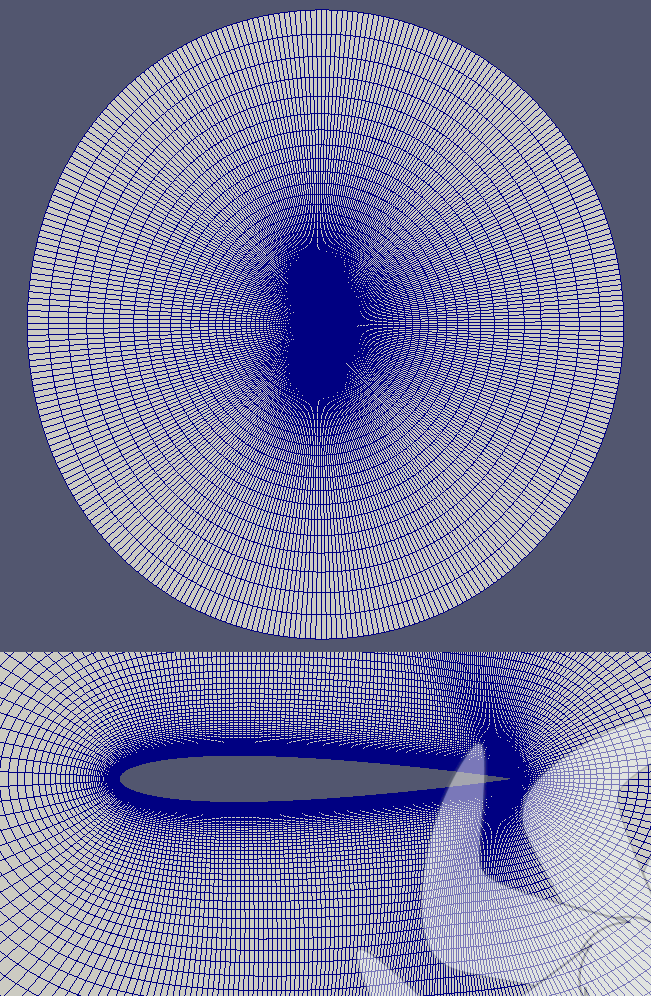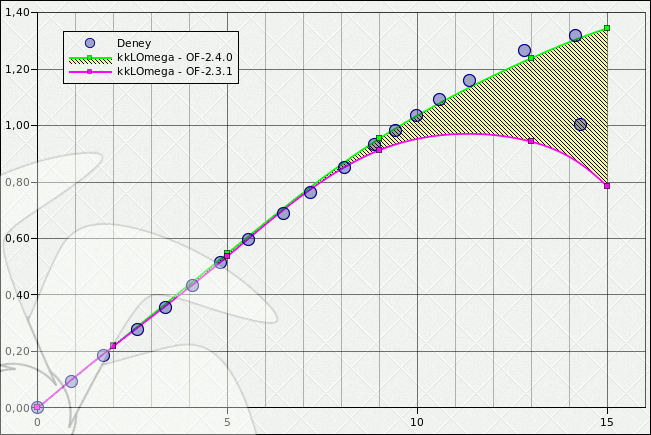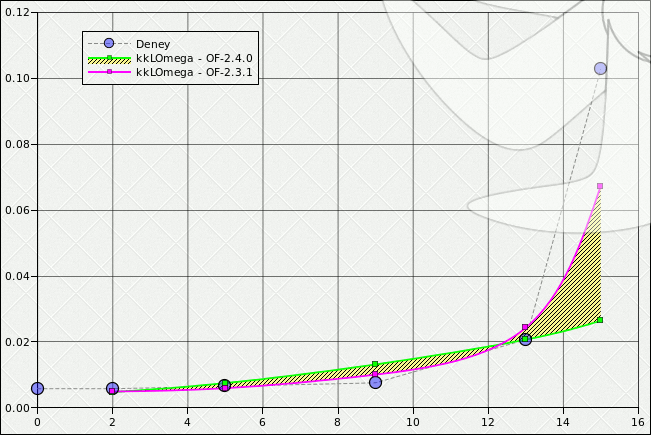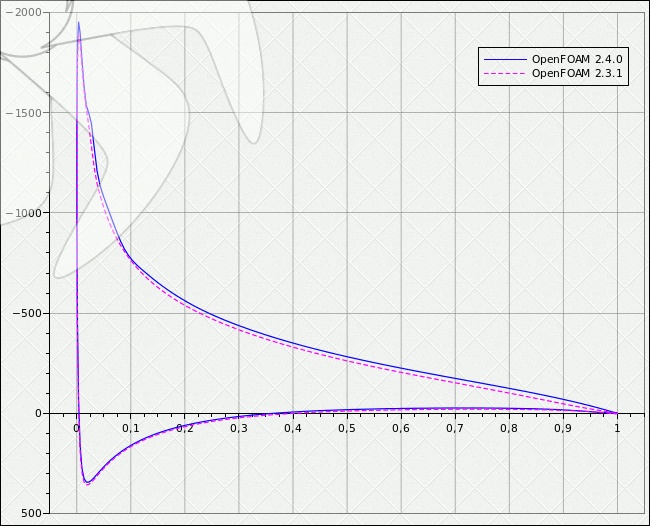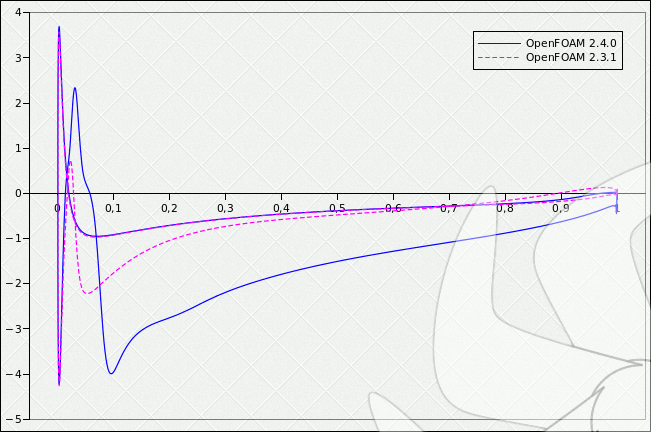|
| Ship's Log - Engineering |
| 15/03/2016 |
|
The k-kl-omega model is a new transitional turbulence model which is described in [1]. However in 2013 it is appeared that this paper has several errors which must be corrected. In OpenFOAM these corrections have been applied with the version 2.4.0 and later. Since there are many studies based on the 2008 version of the k-kl-omega model by OpenFOAM (between 2.1.0 to 2.3.1) and probably by some other CFD tools which have used the old implementation, it may be interesting to see the real difference of the two implementations as resultwise. In the previous study a simple comparison between the kkLOmega implementations via the default test case came with the OpenFOAM. This time a new comparison have been setup against an experimental case: naca0012. NACA Technical Note 3361 [2] which covers the naca0012 airfoil on the full range of angle off attacks, has been used for the experimental data for this comparison as smooth surface, without any trip at Re 1,8e06 as the case. Since the mean comparison is between the OpenFOAM versions adding the experimental data may give a better insight about the situation. Two OpenFOAM versions have been used for representing the two different k-kl-omega turbulence model implementations;
A single case file has been made and all the mesh, boundary conditions, schemes etc. were identical so the only difference was on the turbulence model implemented. The grid has been made by the Construct2D and imported into OpenFOAM. It consists of 52.001 hexahedral cells. Yplus values are min: 0.010183 - max: 1.53139 - average: 0.335399; so no wall functions since the kkLOmega is a low-Re model. Here is the checkMesh results:
/*-------------------------------------------------------------------------------*\
Figure.1) The structured O-grid used around the naca0012 geometry for the study. The details can be seen above on the checkMesh report.
Figure.2) Computed Lift coefficients. Until about 5degrees of AoA, both models gives similar results. On the other hand at 9degrees the difference becomes gradually increasing. Overall performance of the corrected k-kl-omega implementation reasonably good for the pre-stall region.
Figure.3) Computed drag coefficients. Interestingly the corrected implementation performed worse than the wrong one for this case. This may be the result of relatively coarse mesh for accurate drag prediction but it seems the old implementation works reasonably well with the same grid.
Figure.4) Computed pressure distribution on the naca0012 section at 9degrees of angle of attack. There are important differences on suction side.
Figure.5) Computed wall shear stress on the naca0012 section at 9degress of angle of attack. While pressure side is identical for both kkLOmega versions there is a big difference on the suction side which possibly leads to non-accurate drag prediction. A finer mesh must be studied.
References1. A Three-Equation Eddy-Viscosity Model for Reynolds-Averaged Navier–Stokes Simulations of Transitional Flow, 2008, D. Keith Walters - Davor Cokljat2. Aerodynamic Characteristics of NACA 0012 Airfoil Section at Angles of Attack From 0 to 180 - TN 3361, 1955, Chris Critzos - Harry H. Henson - Robert W. Boswinkle |
